Winter Jewels
THE ANCIENT QUINCE…..kind of a mystery fruit. Neither an apple nor a pear, but of the same Rose family. This was the chosen fruit for the symbol of fertility by the ancient Greeks, who dedicated them to Aphrodite, the goddess of love. Quince are native to the area between the Caspian and Black Seas, namely Turkey, Iran and Southern Georgia. Their popularity brought them to South America, Australia, New Zealand and the Mediterranean, where they are commonly eaten raw as well as cooked.
In North America, Quince are on the specialty fruit list, with very few trees in production. Unlike apples and pears which are enjoyed right off the tree with their sweetness, these bright yellow fruit are very hard, acidic and not naturally sweet. Instead, they are turned into marmalade, jam, jelly and preserves. To me, their flavor is similar to a guava, especially when made into jelly. They give off a wonderful perfume when ripe, close to the smell of roses, so keep a few in a bowl to fragrance the room. When cooked, they turn light pink, and their cooking liquid turns to a deep crimson hue. If you are lucky enough to get your hands on any of them next Fall, I’ll share a few ways to make the most of them.
Quince jelly, jam and preserves are a rare treat. I found a 25 pound box at a local farm, and set out to make all three. I’m now struggling to keep a few jars for myself, as they have ended up as perfect Christmas gifts this year. The idea of giving something from the kitchen has been so much more appealing and satisfying in it’s simplicity than trudging along the retail trail. Winter has just gotten a whole lot sweeter.
For those of us who are fully engaged with the pleasures and benefits of the jam and jelly making business, working with quince is quite rewarding. These hard, knobby fruit are tough to cut, but are full of natural pectin, and therefore, one can make jelly and jam with the same batch of fruit. For the following recipe, I give ratios of fruit to sugar. That way, you can make however much you want, depending upon your supply of quince. If you haven’t made jam or jelly before, you may need a primer. Google is great for that-try wikipedia. For those of you who do make jam and jelly, you will need to have your jars and lids ready, and won’t need any pectin.
Quince jelly and jam
To make a supply of both jam and jelly from one batch of fruit, rub off any fuzz and debris from the fruit, and wash them in a colander. Fill a preserving pot halfway with water and a squeeze of lemon juice. Fill a medium sized saucepan with water and set it next to the pot. Cut the quince into quarters and with each quarter flat on one side, cut off the core. Now cut each quarter into 1/4″ to 1/2″ slices and put them in the preserving pot. Put the cores into the saucepan. Add any debris from the fruit- seeds, stems or ends-and add them to the saucepan. Make sure there is about an inch of water covering all the fruit in each pot. Bring both pans to a slow simmer and cook, partially covered for about an hour, or until the fruit is soft. Make sure you keep the water level above the fruit. The cores and stems liquid carry additional pectin, and you will use this to add to the fruit to make jam.
When the fruit is soft, strain the water from the fruit through cheesecloth or a muslin bag, careful not to squeeze or push any remaining liquid out as it will turn the jelly cloudy. Now you are ready to make jelly and jam. I used a vanilla bean to flavor my jam. It was excellent. Just cut one in half and scrape the seeds into the pot along with the pod.
For jelly-use equal parts by weight for the fruit and sugar
In a clean pot, add your measured quince liquid and sugar. Stir to dissolve and bring to a boil. Cook this mixture for about an hour, or until it has turned into a jelly state, and the color has turned crimson. Ladle into sterilized jars. Jelly will keep for about 1 year.
For jam-use 2 parts fruit to 1 part sugar by weight
Weigh and mash the cooked fruit, transfer to a clean pot, and add the sugar. Mix well, and add about 1 cup of the pectin liquid you made from the cores per 4-5 lbs of fruit. Stir well and bring to a slow simmer. Cook the jam for about 40 minutes, and stir the bottom occasionally to prevent sticking. The jam should be thick and rose colored after this time. Preserve in sterilized jars.
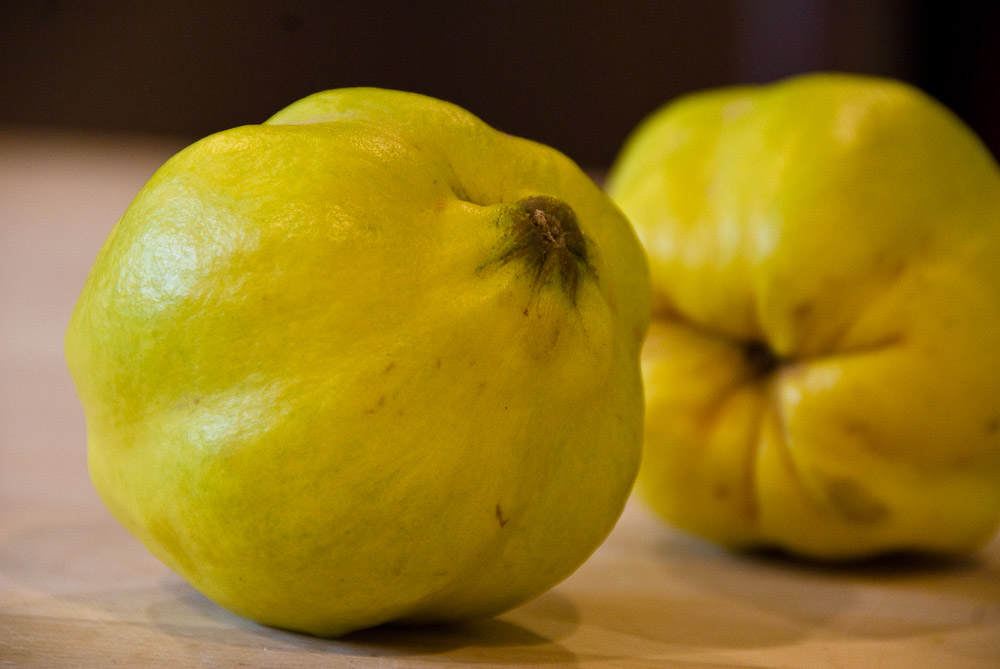
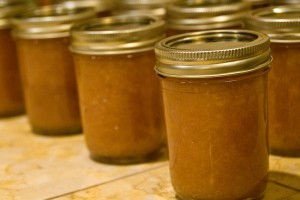
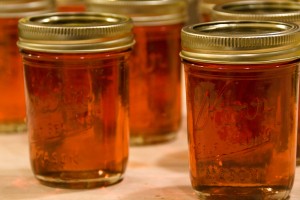
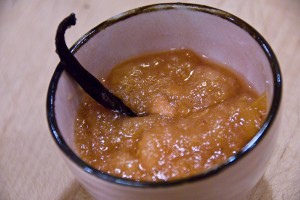
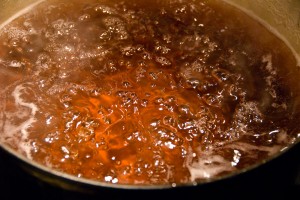
Hello, I understand quince and vodka go well together – remind me how to create a quince infused bottle of good cheer?